Hofmann rearrangement
In the Hofmann rearrangement an unsubstituted amide is treated with sodium hydroxide and bromide to give a primary amine that has one carbon lesser than starting amide.

In the migrating group is chiral then is configuration is retained. Electron releasing effects in the migrating group increases reactivity of Hofmann rearrangement.
Which of the following compounds (s) cannot give Hofmann rearrangement :
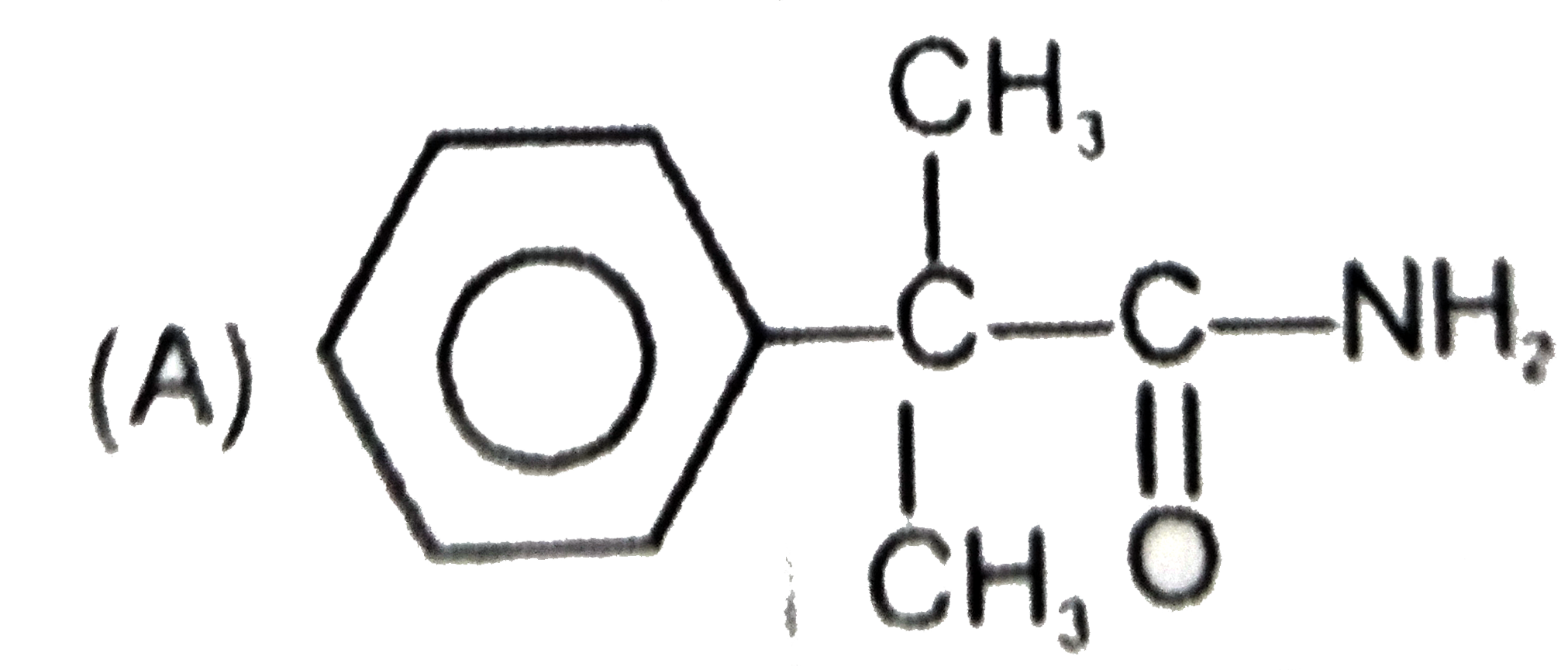
CH3−CH2−O∣∣C−NH−Ph

Ph−O∣∣C−NH2
The correct Answer is:B
Topper's Solved these Questions
- AROMATIC COMPOUNDSBOOK - RESONANCECHAPTER - AROMATIC COMPOUNDSEXERCISE - Exercise-3 (Part-I) JEE Advanced
36 Videos
- AROMATIC COMPOUNDSBOOK - RESONANCECHAPTER - AROMATIC COMPOUNDSEXERCISE - Part - II JEE MAIN
20 Videos
- AROMATIC COMPOUNDSBOOK - RESONANCECHAPTER - AROMATIC COMPOUNDSEXERCISE - Part-III : One or more than one option correct type
10 Videos
- ALKYL HALIDE, ALCOHOL, PHENOL, ETHERBOOK - RESONANCECHAPTER - ALKYL HALIDE, ALCOHOL, PHENOL, ETHEREXERCISE - ORGANIC CHEMISTRY(Alkyl Halide, Alcohol,Phenol,Ether)
56 Videos
- BASIC CONCEPTSBOOK - RESONANCECHAPTER - BASIC CONCEPTSEXERCISE - ORGANIC CHEMISTRY(BASIC CONCEPTS)
27 Videos
Similar Questions
Hofmann rearrangement
In the Hofmann rearrangement an unsubstitued amide is treated with sodium hydroxide and bromine to give a primary amine that has one carbon lesser than starting amide.
Gneral reaction:
If the migrating group is chiral then its configuration is retained. Electron releasing effects in the migrating group increase reactivity of Hofmann rearangement.
Which of the following compound(s) cannot give Hoffman rearrangement:
View SolutionHofmann rearrangement
In the Hofmann rearrangement an unsubstitued amide is treated with sodium hydroxide and bromine to give a primary amine that has one carbon lesser than starting amide.
Gneral reaction:
If the migrating group is chiral then its configuration is retained. Electron releasing effects in the migrating group increase reactivity of Hofmann rearangement.
Arrange the following amides according to their relative reactivity when reacted with Br2 in excess of strong base:

View Solution
Knowledge Check
Hofmann rearrangement
In the Hofmann rearrangement an unsubstitued amide is treated with sodium hydroxide and bromine to give a primary amine that has one carbon lesser than starting amide.
Gneral reaction:
If the migrating group is chiral then its configuration is retained. Electron releasing effects in the migrating group increase reactivity of Hofmann rearangement.
Which of the following compound(s) cannot give Hoffman rearrangement:A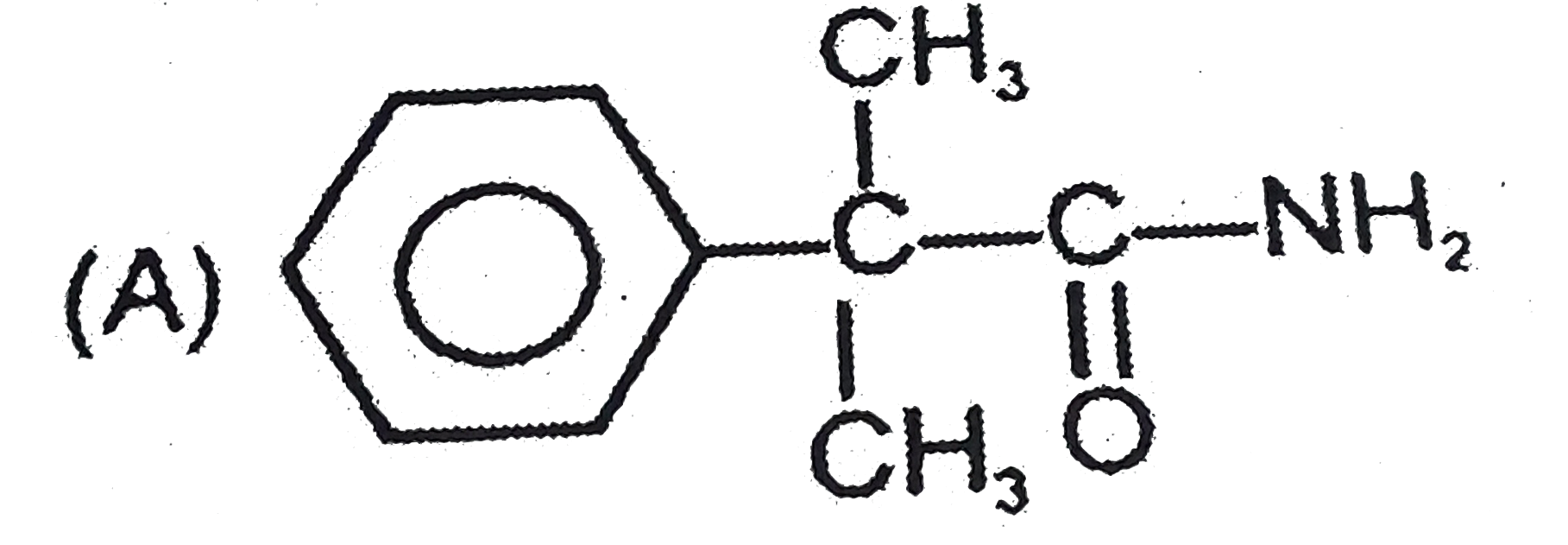 BCH3−CH2−O∣∣C−NH−PhC
BCH3−CH2−O∣∣C−NH−PhC DPh−O∣∣C−NH2
DPh−O∣∣C−NH2Which of the following compounds cannot give Hofmann rearrangement?
A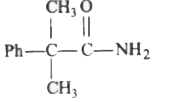 B
B C
C D
D
which of the following compounds cannot give Hofmann rearrangement ?
APh−CH3∣C∣CH3−O||C−NH2BCH3−CH2−O||C−NH−PhC DPh−O||C−NH2
DPh−O||C−NH2
Hofmann rearrangement
In the Hofmann rearrangement an unsubstituted amide is treated with sodium hydroxide and bromide to give a primary amine that has one carbon lesser than starting amide.

In the migrating group is chiral then is configuration is retained. Electron releasing effects in the migrating group increases reactivity of Hofmann rearrangement.
Arrange the following amides according to their relative when reacted with Br2 in excess of strong base :

View SolutionHofmann rearrangement
In the Hofmann rearrangement an unsubstitued amide is treated with sodium hydroxide and bromine to give a primary amine that has one carbon lesser than starting amide.
Gneral reaction:
If the migrating group is chiral then its configuration is retained. Electron releasing effects in the migrating group increase reactivity of Hofmann rearangement.
Arrange the following amides according to their relative reactivity when reacted with Br2 in excess of strong base:

View SolutionHofmann rearrangement
In the Hoffmann rearrangement an unsubstituted amide is treated with sodium hydroxide and bromine to give a primary amine that has one carbon lesser than starting amide.
R−O∣∣C−NH2+NaOH+Br2→R−N=C=Oisocyanatehydrolysis−−−−−→R−NH2
Mech :
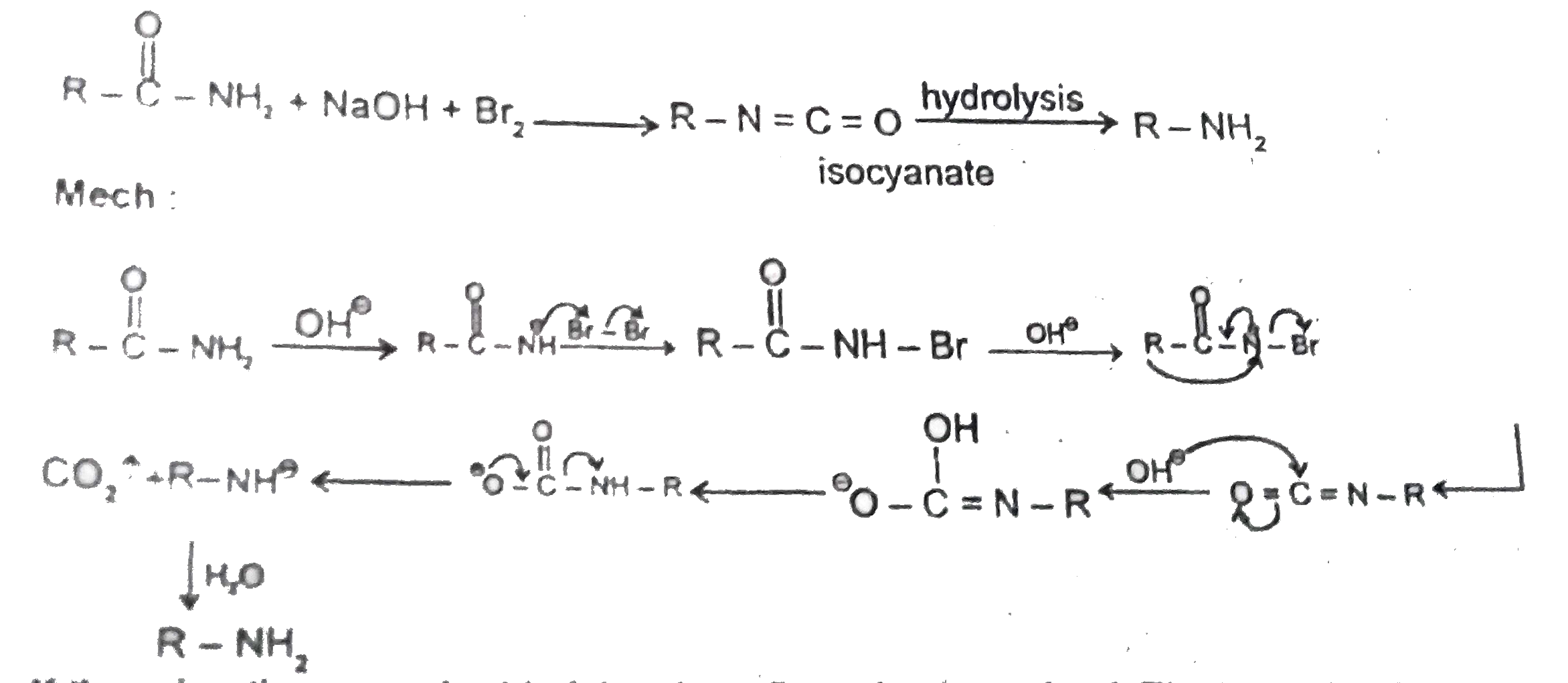
If the migrating group is chiral then its configuration is retained . Electron releasing effects in the migrating group increases reactivity of Hofmann rearrangement.
Which of the following compound cannot give Hofmann rearrangement :
View SolutionHofmann rearrangement
In the Hoffmann rearrangement an unsubstituted amide is treated with sodium hydroxide and bromine to give a primary amine that has one carbon lesser than starting amide.
R−O∣∣C−NH2+NaOH+Br2→R−N=C=Oisocyanatehydrolysis−−−−−→R−NH2
Mech :
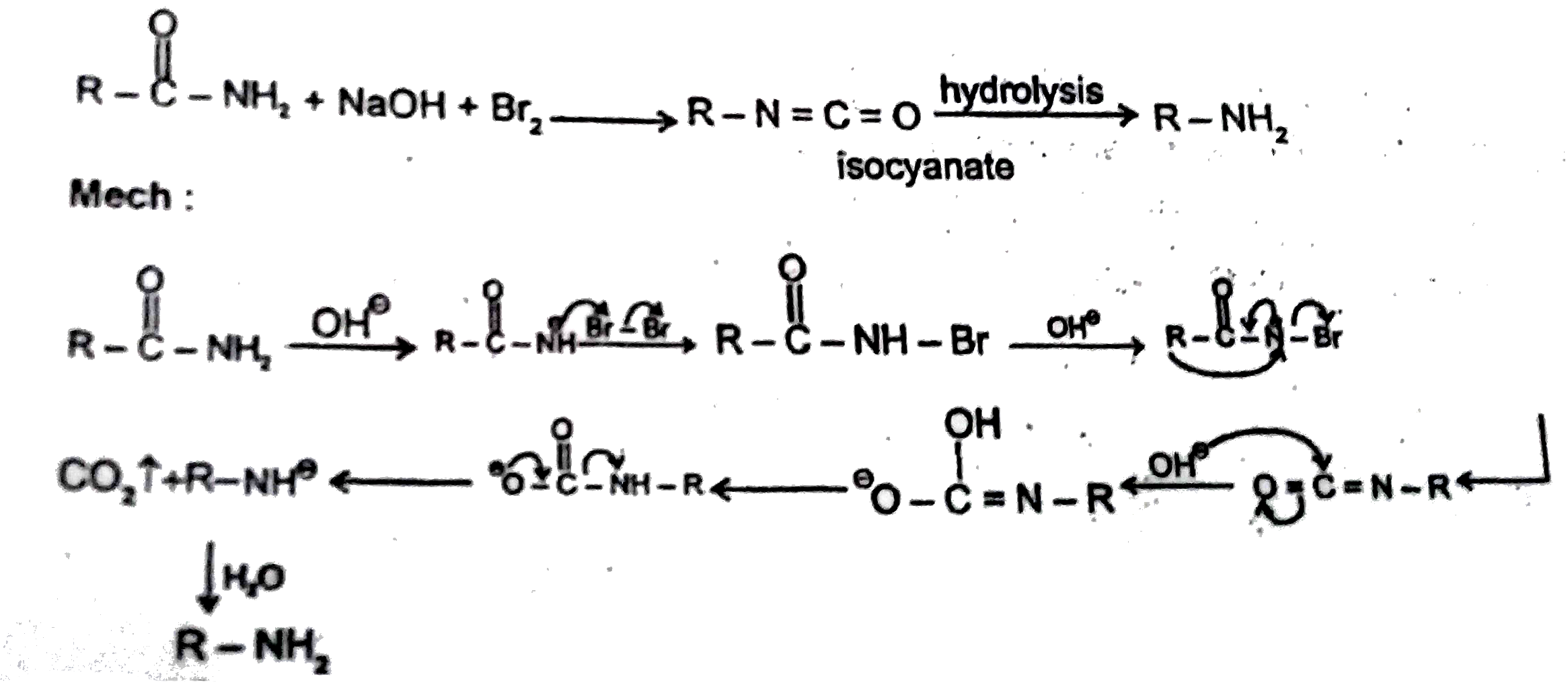
If the migrating group is chiral then its configuration is retained . Electron releasing effects in the migrating group increases reactivity of Hofmann rearrangement.
Arrange the following amides according to their relative reactivity when react with Br2 in excess of strong base

View SolutionHofmann rearrangement
In the Hoffmann rearrangement an unsubstituted amide is treated with sodium hydroxide and bromine to give a primary amine that has one carbon lesser than starting amide.
R−O∣∣C−NH2+NaOH+Br2→R−N=C=Oisocyanatehydrolysis−−−−−→R−NH2
Mech :
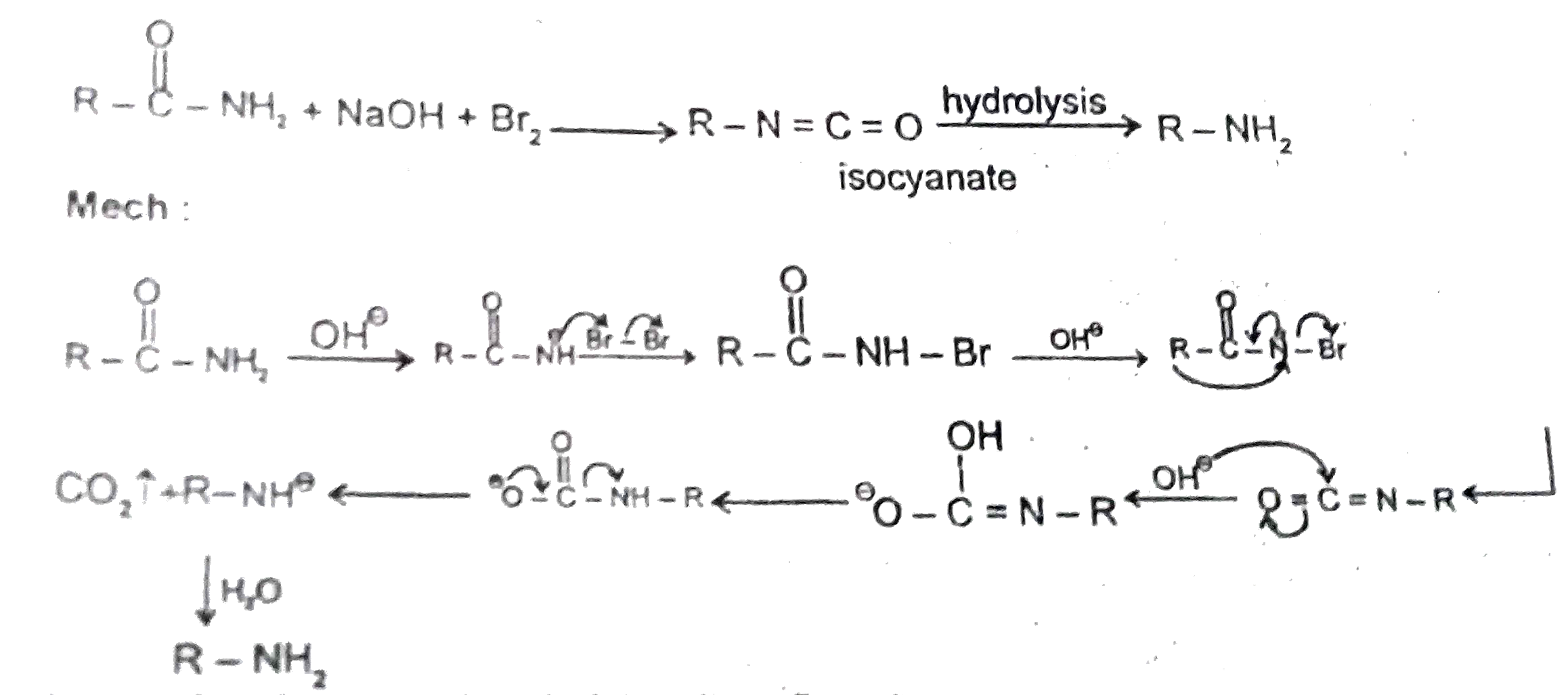
If the migrating group is chiral then its configuration is retained . Electron releasing effects in the migrating group increases reactivity of Hofmann rearrangement.
H3C−H2C−∗C∣CH3(R)H−O∣∣C−NH2+CH3−CH2−D∣C∣CH3(S)−O∣∣C−15NH2Br2/KOH−−−−−−→Products
View Solution
